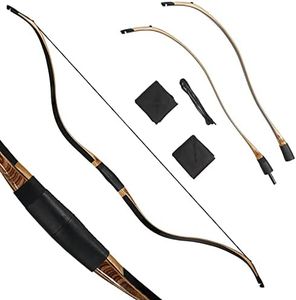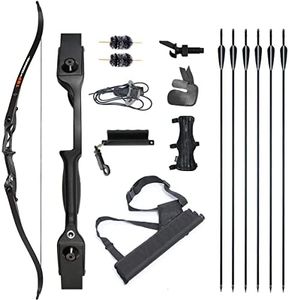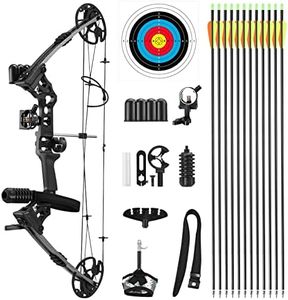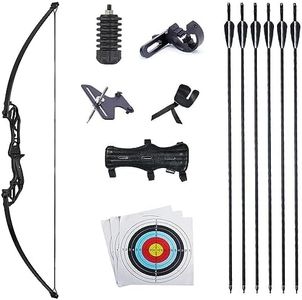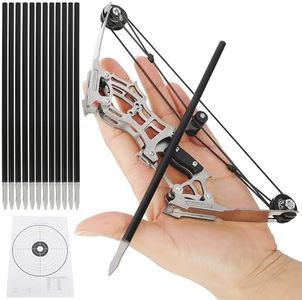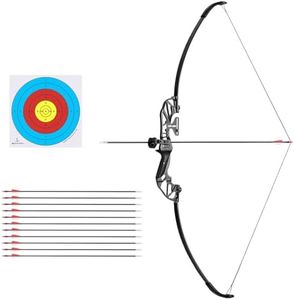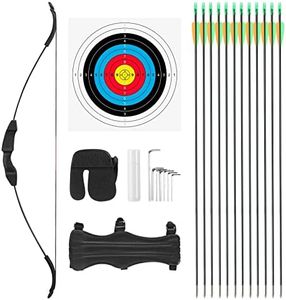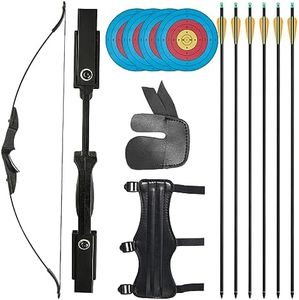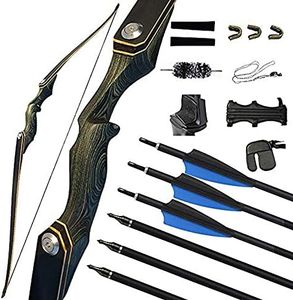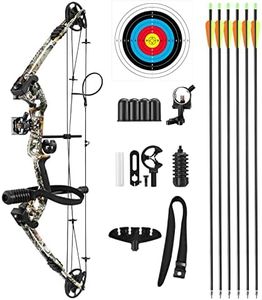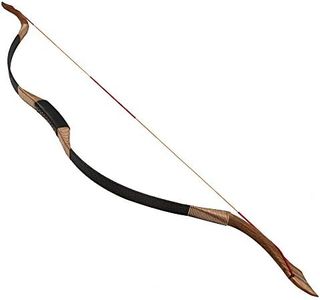We Use CookiesWe use cookies to enhance the security, performance,
functionality and for analytical and promotional activities. By continuing to browse this site you
are agreeing to our privacy policy
10 Best Beginner Archery Bow
From leading brands and best sellers available on the web.Buying Guide for the Best Beginner Archery Bow
Choosing your first archery bow is an exciting step into a rewarding hobby. For beginners, the most important thing is to find a bow that matches your current skill level while still allowing room for improvement and growth. The ideal bow should be comfortable to hold, easy to draw, and not too heavy or too powerful at first. Understanding key features and their relevance will help you make an informed decision and enjoy archery safely and successfully.Draw WeightDraw weight refers to how much force is needed to pull back the bowstring fully. This spec is crucial because it determines both the power behind your shot and how manageable the bow will be for you. For beginners, a lower draw weight is usually better, generally ranging from 10 to 25 pounds for youths and 20 to 35 pounds for most adults. A bow that's too heavy can make your arms tired quickly and might also lead to poor shooting technique. You should choose a draw weight that feels comfortable to pull back repeatedly—ideally, you should be able to shoot multiple arrows in a row without excessive effort.
Bow LengthBow length is the measurement from one tip of the bow to the other. This is important because it complements your arm span and helps with stability. Beginner bows typically range from 48 inches to 70 inches. A longer bow can be more stable and accurate, making it easier for many new archers to learn with; shorter bows are more maneuverable but require more control. Match the bow length to your own arm span or ask for advice in a shop based on your height and intended use—target shooting or field use.
Draw LengthDraw length is how far you pull back the string before releasing it. It usually matches the distance from the bow grip to your face (anchor point) when holding the bow. This spec ensures the bow feels comfortable and shoots properly. Bows come with adjustable or fixed draw lengths. If you’re not sure about your draw length, you can measure it at most archery shops or by using your arm span divided by 2.5. Picking the correct draw length is important—too short or too long will affect your accuracy and comfort.
Bow TypeThere are different types of bows, such as recurve, longbow, and compound. For beginners, the recurve bow is a popular choice because it’s simple, versatile, and widely used in training and competition. Compound bows offer mechanical aids and let you hold less weight while aiming, but they are often more complex and require more maintenance. Longbows have a classic design and can be fun but are less forgiving. Choose a type that matches your interest: start with a recurve for simplicity or pick a compound if you want easier aiming with more features.
HandednessBows are designed for right-handed or left-handed shooters, depending on which hand you use to pull the string. This is important because using the wrong-handed bow can be uncomfortable and affect your accuracy. If you are right-handed, you will hold the bow with your left hand and pull the string with your right hand, and vice versa for left-handed people. Always check and try holding the bow to be sure it fits your dominant hand and eye.
AdjustabilitySome bows offer adjustable draw weights and draw lengths, which is a big advantage for beginners as it lets you grow in skill without needing a new bow right away. Beginners often benefit from a bow that can be fine-tuned to their comfort as their strength and technique increase. If possible, look for bows that can be adjusted to a broader range, so you can start light and gradually increase as you improve.
